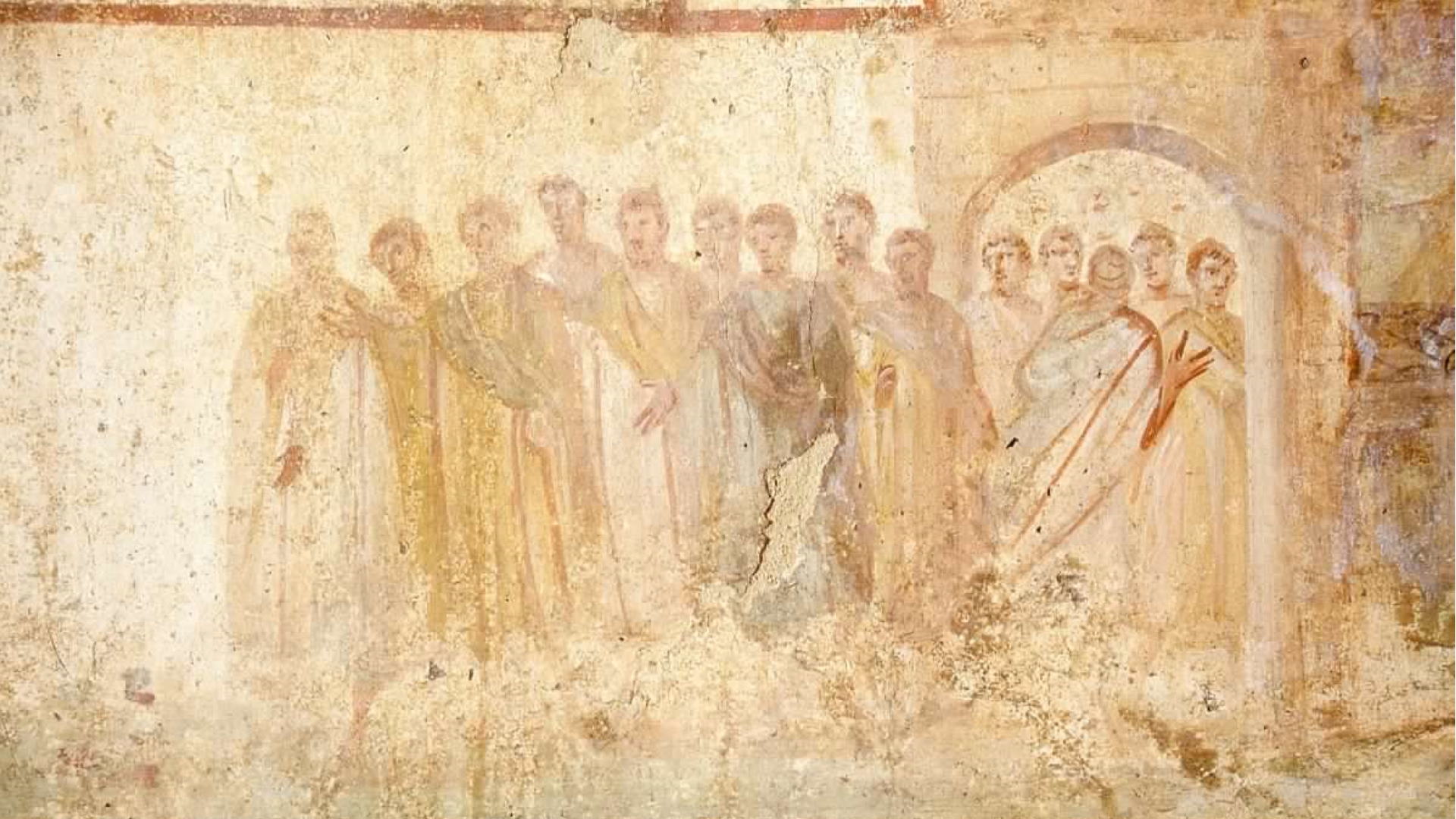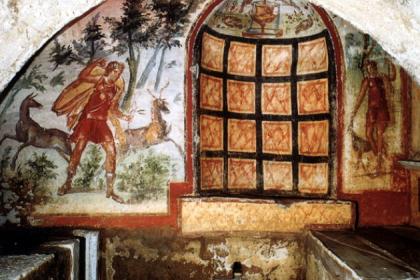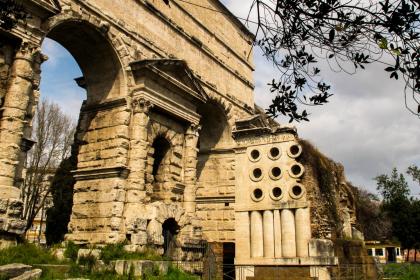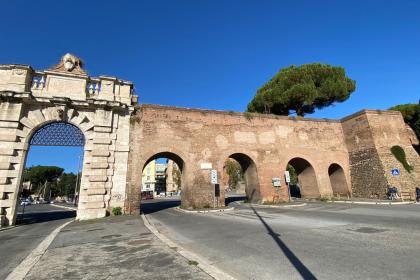
Squeezed between two buildings, a small gate a few hundred meters from Porta Maggiore gives access to one of the most important funerary complexes of early 3rd-century imperial Rome, discovered by chance in 1919 during the works for the construction of a garage. The richness and variety of the frescoes that adorn it, with scenes belonging to both the pagan and Christian worlds, immediately aroused the admiration of scholars, while at the same time posing problems of interpretation that are in part still unsolved today.
The hypogeum, not mentioned in any source, is on two floors: the lower part of a semi-hypogean hall is preserved on the upper floor; below it, there are two specular rooms that are completely hypogean. It is precisely from the floor mosaic of one of the lower rooms that the name of the hypogeum derives: on it Aurelius Felicissimus, who belonged to a wealthy family of imperial freedmen, dedicates the complex to his brothers and co-liberts. On a small slab on a wall along the stairs Aurelius Martinus and his wife Iulia Lydia commemorate their deceased daughter Aurelia Myrsina.
Capturing the most attention are however the numerous frescoes in the small cemetery, painted at a time when different cults, faiths, beliefs, ideas and myths coexisted in Rome. On a wall of the upper room are depicted, for example, a man and a woman with a snake, perhaps Adam and Eve or, according to a more recent interpretation, Heracles in the Garden of the Hesperides. Descending to the lower rooms, we recognize 12 figures wearing togas (perhaps the apostles), and a bearded character in the act of reading a scroll with a flock of sheep grazing at his feet (perhaps the representation of Jesus’ speech on the mountain).
In other scenes, we see a man galloping on a horse in front of a temple, followed by several figures and greeted by a group of persons that come out of a city to meet him; a banquet with thirteen people around a table; a man in a tunic, seated in front of a female figure, with a large loom, and three naked young men, characters interpreted as Odysseus, Penelope, and the Proci in Ithaca. Depicted almost everywhere, imaginary animals, geniuses and peafowls symbolize the immortality of the soul.
The funerary use of the hypogeum lasted only a few years, until the construction of the Aurelian Wall between 270 and 275 AD: the complex was included within the new city wall where burial was forbidden by law.
Hypogäum von Via Livenza

 Condividi
Condividi
Porta Maggiore

 Condividi
Condividi
Die Aurelianischen Mauern

 Condividi
Condividi
Informationen
Special visit on request
Rules for visiting the catacombs closed to the public:
www.catacombeditalia.va/content/archeologiasacra/it/visita-catacombe/per-regione/roma/ipogeo-degli-aureli.html
 Condividi
Condividi
Location
Um mehr über alle barrierefreien Dienste zu erfahren, besuchen Sie den Abschnitt barrierefreies Rom.











































